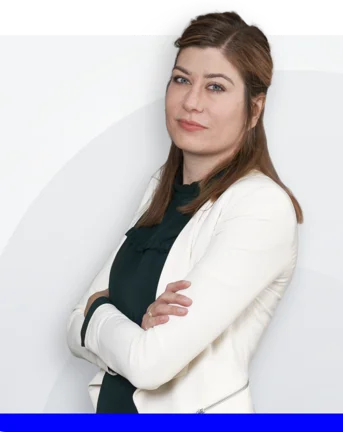International Women’s Day is a time to advocate for gender equality in the workplace and to celebrate the women who make a difference, setting an example and leading the way for others.
Furthermore, diversity is increasingly becoming an important factor in driving innovation, improving decision-making, and attracting candidates. Confirming this sentiment, research has shown that firms leading in gender diversity are 25% more likely to be more profitable (McKinsey, 2019). Yet, only 29% of the IT workforce is female (LinkedIn, 2024), prompting a conversation on how to improve diversity and encourage more women to pursue and advance in IT careers.
To explore the topic, we interviewed four women with extensive experience in the field to gather their perspectives on these matters. The four 7N IT consultants, Agnieszka Stojanik, Katja Kaski, Henriette Osbøl, and Nanna Nørager Hansen, discussed their motivations for pursuing careers in IT, their passion for the field, and offered advice to others, along with sharing their perspectives on diversity.
What attracted you to the field of IT?




What are the best aspects of working in IT?
“What I love about working in IT is the variation in the nature of the work, the numerous development opportunities available, and the challenge of creating structure in chaos.”
For Agnieszka, the best part of working in IT is the collaborative work culture where everyone plays for the same goal, eliminating the need for competition or constant validation. Additionally, she appreciates that “working in IT, salaries are relatively high, so you can be financially independent and develop your passions”. However, Agnieszka acknowledges that women have historically faced challenges in being perceived as equally qualified for IT roles as men, emphasizing that “fortunately, times have changed, and in recent years, women have become desirable in IT teams due to their unique competencies and to enhance diversity”.
“What I find truly rewarding in digital product and service development is solving complex problems in a structured way. As a consultant, it's an especially exhilarating challenge to quickly immerse oneself in new environments, identify and unravel complex problems, and steer the team toward achieving clear, measurable objectives. The sense of accomplishment that comes from meeting factual targets is unparalleled, but the end goal is of course to delight the end customer and meet specific business objectives,” says Katja.
“I really like the continuous learning, which is a prerequisite to stay up to date. I also thrive in complex projects and enjoy the challenges of it. Moreover, I particularly appreciate the flexibility of remote work and adaptable hours, as they enable me to have a good work-life balance.”
On the flip side of working in IT, Katja explains that “the primary challenge lies in managing the complex web of organizational collaboration. Finding a balance between efficient processes and decision-making, without getting trapped in excessive bureaucracy, remains a delicate task. Ensuring smooth collaboration across various organizational layers, while maintaining each team's and individual's autonomy, is crucial yet challenging.”
However, according to Nanna, the challenges are undoubtably outweighed by the benefits and opportunities: “In my perspective, there isn't a downside to working in IT. Personally, I truly believe that if I wake up in the morning, feeling dissatisfied with my job, I'll actively seek to do something else. This mindset guides my approach to life.”
Why do you think fewer women than men enter IT-related fields?
In 2022, women earned 24% of degrees in computer science and 21% in engineering and technology fields (STEM Women 2023). According to research, there are numerous reasons why fewer girls and young women choose to further their education in tech fields, such as gender stereotypes, double standards, and lack of female role models (González-Pérez et al., 2020).
Our consultants shared their views on the topic of diversity in IT and provided perspectives on the factors contributing to the skewed gender balance:
“I think that in the collective consciousness, technical roles may still be perceived as more masculine, which may discourage women from pursuing them. For some women, the preponderance of men in this profession can also be daunting due to a fear of feeling alienated. I have to admit that working in such an environment can be a challenge, especially at the beginning, but I would never exchange it for any other field. In my opinion, one way to attract more women to IT may involve sharing knowledge about what working in IT actually looks like and the benefits it brings. It is also very important to support women who decide to pursue a career in IT, especially in their workplace.”
Regarding stereotypes and gender roles, Katja explained, “I’ve been fortunate to work alongside many inspiring women in key roles within digital product and service development. This experience has profoundly shaped my belief that there are no boundaries to what women can accomplish, regardless of the industry they choose. Yet, it's clear that women are still underrepresented, particularly in tech-heavy roles. This disparity, I believe, stems from deep-seated societal stereotypes and a lack of encouragement for girls and young women to venture into technology and other fields traditionally dominated by men.”
As mentioned by Henriette, the problem may also connect to prejudice around a career in IT: “Often there is a misconception that working in IT is very stereotypically nerdy. We need to overcome this stereotype to appeal to more girls and young people in general.”
But what does “nerdy” really imply?
“Regardless of gender, IT hasn't traditionally been portrayed as being particularly alluring. Many associate IT people with being "nerds," and it's really only when you mature that you understand the value and coolness of embracing nerdiness. My personal definition of a nerd? - An intellectual badass”
How can we encourage more women to pursue a career in IT?
According to the interviewees, education on opportunities within tech, sparking interest in young girls, and supporting other women are some of the ways we may attract more women to IT-related careers.
Emphasizing the importance of perceptions and education, Henriette explains: "The world of IT has undergone significant development over the years, and the perceptions people hold about it may no longer reflect reality. Those guiding our youth in education and career choices may be looking backward rather than forward, and they may not be aware of the diversity in current and future opportunities of IT. Today, IT is so integrated in our work that the roles defined as “IT” are, in fact, very cross-disciplinary and extremely diverse, and this is what we need to educate our youth about.
Adding to this perspective, Agnieszka suggests, “one way to attract more women to IT fields may be to share knowledge about what working in IT actually looks like and what benefits it brings. It is also very important to support those women who decide to pursue a career in IT, especially in their workplace”.
“To bring more women into tech, highlighting female role models is key. Their success stories show that tech careers are open to all, regardless of gender. Early education about tech's diverse opportunities is also vital, blending tech learning with problem-solving to spark interest and build confidence. It's crucial to reinforce that gender doesn't define one's potential in any field. By creating an environment that supports exploration and self-belief, we can empower more women to step into tech and dismantle existing gender barriers”
What is your best advice for women looking to build a career in the world of IT?
The experience and support provided by female role models can significantly influence women who are embarking on their professional journey in IT. Female leaders and role models play a crucial role in challenging gender stereotypes and inspiring more women to pursue careers in the tech workforce. Therefore, we sought advice from our experienced consultants to share insights for other women:
“Be passionate about what you do, and don't let anyone discourage you from pursuing the path of your choice!”
According to Katja, the IT sector holds many opportunities, and it is crucial to use it for self-development:
“If you're stepping into the tech world, my advice is to focus on finding environments where growth, learning, and experimentation are encouraged. It's less about gender and more about finding a place that supports your development, allows you to try different roles, and helps you build a diverse skill set. Tech is dynamic and fast-paced, so being part of a team that's adaptable, innovative, and curious can really propel your career forward. Also, remember that the tech field offers a wide range of roles; you don't need to be an expert in everything, so find what you're passionate about and hone your skills in that area.”
Nanna highlights self-awareness, confidence, and a supportive environment as essential elements for success in the tech industry. She offers the following advice:
- “Have confidence in yourself, continue to challenge yourself, and assert your rights - you have just as much right to be there as anybody else. “
- “Support other women; they can benefit from your guidance and encouragement.”
- “Stay mindful of your current skills and where you want to progress. Keep evolving and focus on your growth.”
Finally, Henriette emphasizes that it is important to remember that IT permeates almost every aspect of modern business, stating: “It is not "a world of IT" you enter, you are in a world full of IT everywhere, regardless of your gender.”
Sources:
- McKinsey, 2019: “Diversity Wins: How inclusion matters”
- LinkedIn Talent Insights - Feb 8th, 2024
- STEM Women, 2023: Women In STEM Statistics: Progress and Challenges
- González-Pérez et al., 2020: “Girls in STEM: Is It a Female Role-Model Thing?”
doi: 10.3389/fpsyg.2020.02204
Cases, insights & courses
Explore related cases and articles or discover new topics.

In this article, we debunk five misleading myths and cover the aspects that should guide you when planning your IT career.








